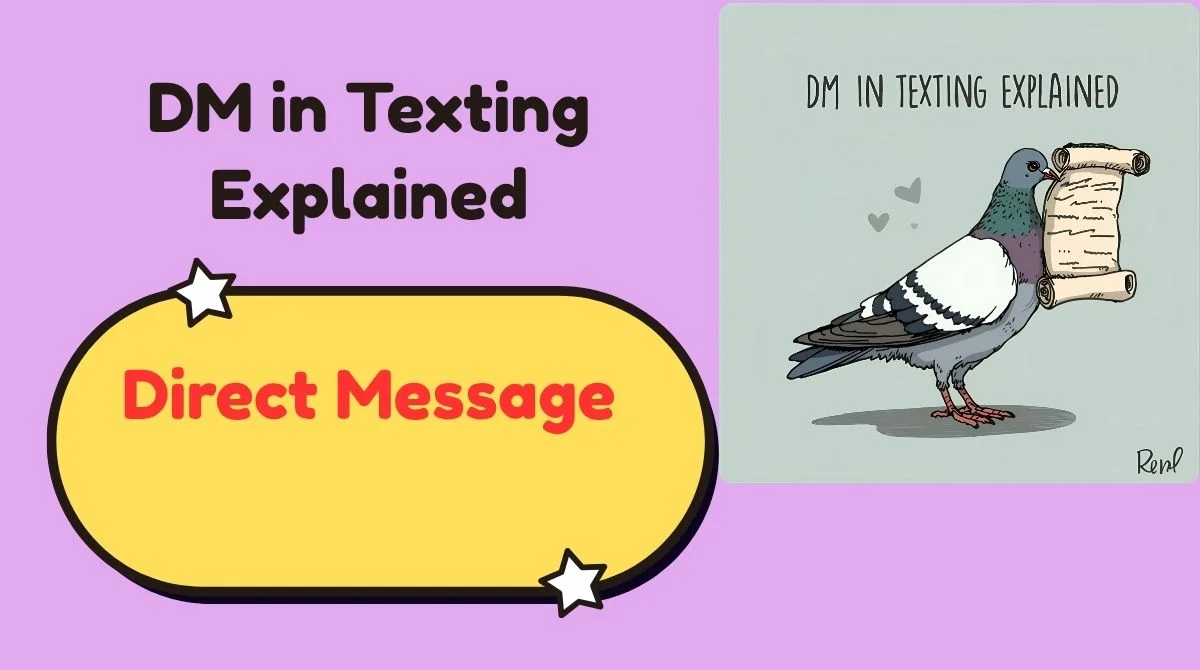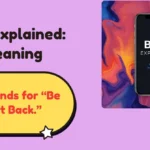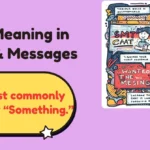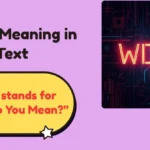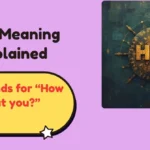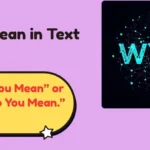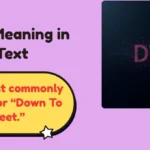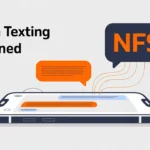Ever seen someone say “DM me” and wondered what it really means? Or maybe you’ve used it yourself but aren’t totally sure if it’s right for every situation? You’re not alone.
In today’s fast-moving digital world, DM in texting has become a universal shortcut — used across social media, business chats, and even dating apps. But just because it’s popular doesn’t mean everyone uses it correctly.
This guide breaks down what DM means, how to use it naturally, when not to, and the right alternatives for different situations. Let’s dive in.
What Does DM Mean in Texting?
DM stands for Direct Message. It refers to a private communication between two users on a social platform or app.
For example:
“Hey, can you DM me the details?”
“I’ll DM you the link after this.”
It’s called “direct” because, unlike public comments or group chats, a DM happens one-on-one — away from the public eye.
A Quick History of “DM”
- The term originated from Twitter (now X) in the early 2000s when users could send “Direct Messages” privately.
- As other platforms like Instagram, Facebook, and LinkedIn introduced similar private messaging, DM became a universal slang term.
- Today, it’s used casually in texting, online communities, and professional settings.
The Meaning Behind “DM” (Direct Message)
At its core, DM means connection without an audience. It’s how people move conversations from public to private.
Here’s how it compares with other terms:
| Term | Full Form | Where It’s Used | Main Purpose |
|---|---|---|---|
| DM | Direct Message | Instagram, X, TikTok | Personal or casual chats |
| PM | Private Message | Facebook, Forums | Community or group-based platforms |
| IM | Instant Message | WhatsApp, Messenger | Real-time, ongoing chats |
DM became dominant because it’s short, easy to say, and works across multiple apps.
How “DM” Is Used in Real Conversations
The phrase “DM me” pops up everywhere — from celebrity giveaways to friendly catch-ups.
Common Situations
-
Social connections:
“Loved your photo! DM me your location, I’ll join next time!” -
Business networking:
“We’d love to collaborate. DM us for partnership details.” -
Romantic or flirty exchanges:
“You’ve got that vibe… DM me sometime 😉.” -
Customer support:
“Please DM your order number so we can help you further.”
Each example shows context changes tone — sometimes friendly, other times formal or even flirtatious.
Tone and Nuance: What “DM Me” Really Implies
Tone matters — a lot. Saying “DM me” isn’t just about the message; it’s how and where you say it.
| Tone | Example | Meaning |
|---|---|---|
| Friendly | “DM me when you’re free!” | Open, casual, no pressure |
| Professional | “Please DM us your portfolio.” | Respectful, task-oriented |
| Flirty | “You should DM me more often 😏.” | Suggestive, personal |
| Commanding | “DM me now.” | Can sound rude or impatient |
A single emoji can shift meaning from polite to playful.
For instance, “DM me 😊” feels welcoming, while “DM me.” can sound curt.
Tip: Always read the room (or the platform). What works on Instagram might not land well on LinkedIn.
When to Use “DM” (and When Not To)
Social Media
Use DM when:
- You want to share private details like addresses or links.
- You’re following up on a comment or collaboration idea.
- You’re building a friendly connection.
Avoid it when:
- The conversation should remain public (e.g., Q&A threads).
- You don’t have consent to send personal messages.
Business Context
DMs can work for:
- Quick introductions or pitching ideas.
- Customer inquiries or support.
- Networking when email seems too formal.
But avoid DMs when:
- Discussing confidential or legal matters.
- Communicating with clients who prefer formal emails.
Online Communities
In forums or gaming groups:
- DM for private coordination or sharing files.
- Avoid spammy DMs — it’s a major trust-breaker.
Personal or Romantic Use
- DMing can build intimacy, but respect boundaries.
- Never pressure someone to reply or share personal info.
Golden Rule: Treat DMs like digital door knocks. Always knock — don’t barge in.
How to Respond to a “DM Me” Request
So someone says “DM me.” What’s next?
✅ Do:
- Start with a polite greeting.
- Mention context (“Hey, you asked me to DM you about…”).
- Keep it clear and concise.
- Match their tone (professional or casual).
❌ Don’t:
- Overshare personal details immediately.
- Send spam links or unsolicited content.
- Be overly persistent if they don’t respond.
Example Reply Templates
- “Hey [Name], just DM’ing as you asked about [topic].”
- “Hi! Saw your post — here’s the info you wanted.”
- “Hey there, reaching out about the collab you mentioned.”
Alternatives to “DM Me” (With Contextual Examples)
Sometimes “DM me” feels too direct. Here are better ways to say it based on the tone or setting.
Polite Alternatives
- “Could you message me privately?”
- “Please send me a note directly.”
- “Let’s continue this conversation in private.”
Professional Alternatives
- “Let’s discuss this further via email.”
- “Kindly send a private message with your details.”
- “Reach out through LinkedIn messages.”
Casual or Friendly Alternatives
- “Hit me up!”
- “Drop me a message.”
- “Slide in my inbox 😉.”
- “Shoot me a text later.”
Case Study:
When Instagram creator Samantha Lee shifted from saying “DM me for details” to “Message me privately,” her engagement rate increased by 18% because followers felt less pressured.
The lesson? Tone drives response rates.
Choosing the Right Phrase for Your Situation
Picking between “DM,” “message,” or “email” depends on your audience, platform, and purpose.
| Context | Best Phrase | Tone | Example |
|---|---|---|---|
| Friend | “DM me later!” | Casual | “DM me the meme 😂.” |
| Coworker | “Message me privately.” | Neutral | “Message me privately with the report.” |
| Client | “Please email me.” | Formal | “Please email me your feedback.” |
| Social Media Brand | “DM us to claim your prize!” | Friendly | “DM us your shipping details.” |
| Influencer Outreach | “Reach out via DM or email.” | Balanced | “Open for collabs — DM or email me!” |
Common Mistakes to Avoid When Using “DM”
-
Sending Unsolicited Messages
Cold DMs can come off as spam. Always ask first. -
Being Too Vague
Messages like “Hey” or “What’s up?” waste time. Add purpose. -
Ignoring Privacy Boundaries
Don’t share screenshots or messages without consent. -
Using “DM Me” in Public Posts Without Context
It looks like a sales pitch if you don’t explain why. -
Sounding Pushy or Demanding
“DM me now” feels aggressive. Add politeness and patience.
Quote to Remember:
“A good DM feels like a friendly knock — not a cold call.”
FAQs About DM in Texting
What does DM mean in text slang?
DM stands for Direct Message, used for private communication between users on social or messaging platforms.
Is DM the same as PM?
Not exactly. PM (Private Message) is common in forums, while DM dominates modern social media like Instagram and X.
Can I DM someone I don’t know?
Yes, but only if it’s appropriate — for example, professional outreach or genuine engagement. Always keep it respectful.
How can I know if my DM was read?
Most platforms show “Seen” or “Read” receipts (e.g., Instagram). However, users can disable them for privacy.
Is it rude to ignore a DM?
Not necessarily. People have different boundaries online. If it’s important, follow up politely once — no more.
Final Thoughts: The Power of a Direct Message
DMs have transformed how we connect — they’re fast, private, and personal. Whether you’re reaching out for business, friendship, or networking, remember that tone and intent matter more than the words themselves.
A thoughtful DM builds relationships. A careless one can end them.
So next time you type “DM me,” think about what you really want to say — and how you want the other person to feel.
“A good DM opens doors — but a respectful one keeps them open.”
